Web 3 and the DeFi space
Web 3 and Decentralized Finance (DeFi) are almost inseparable. For one, the economy and components of Web 3 are powered by cryptocurrencies which are elements of decentralized finance. The relationship between the two however will get stronger with time.
Since Web 3 networks operate through decentralized protocols, we expect to see a strong convergence and symbiotic relationship between Web 3 and blockchain and cryptocurrencies.
They will be interoperable, seamlessly integrated, automated through smart contracts, and used to power anything from microtransactions, censorship-resistant P2P data file storage, and sharing with decentralized applications to completely changing every company's conduct and operate their business.
In this article prequel, we looked at the key components of Web 3. This piece helps you understand how the next phase of the internet marries everything within DeFi.
Web3 and Layer 1 Blockchain
Web 3.0 applications are often run on the Ethereum network which is a Layer 1 blockchain. Layer 1 blockchains are a set of proposed solutions that improve the base protocol to achieve better scalability for global adoption. In Web 3, these solutions are employed to scale the Web 3 and Dapps within Web 3.
Apart from Ethereum (ETH), other Layer 1 blockchain solutions used to tackle Web 3 “scalability trilemma” are Litecoin (LTC), Terra (LUNA), Binance Smart Chain (BSC), Cardano (ADA), and Polkadot (DOT).
The ways in which different networks scale depend on their consensus mechanisms, with the common two being Proof of Work (PoW) and Proof of Stake (PoS). There are other consensus mechanisms like Proof of Capacity (PoC), Proof of Activity (PoA), Proof of Burn (PoB), Proof of Elapsed Time (PoET), and Proof of History (PoH) that have their own strengths and are employed by various networks to improve scalability.
Web 3 uses Layer 1 blockchains that are highly scalable to supersede legacy systems supporting Web 2.0, and aid faster transitions to this internet phase.
Web3 and cryptocurrency
Cryptocurrencies provide a financial incentive (tokens) for anyone who wants to participate in creating, governing, contributing to, or improving projects on crypto protocols. In essence, they are the decentralized alternatives to government-backed fiat currencies.
Web 3 applications are powered by cryptocurrencies in form of altcoins or tokens. Whether it is on an NFT marketplace or a Web 3 gaming platform, transactions in Web 3 occur predominantly through cryptocurrencies.
Crypto protocols often offer a variety of services ranging from computing, storage, bandwidth, identity, hosting, and other web services commonly provided by cloud providers in the past. Other protocols offer more native financial services such as loans and payments.
Now there are Web 2 platforms that facilitate crypto payments. However, the key difference between crypto payments in Web 2 and Web 3 is to whom such payments are made.
Where crypto payments flow to the companies or corporations behind services in Web 2, in Web 3, the money goes directly to individuals participating in the network providing such services. This is because of the complete decentralization of Web 3 services where everything is offered by powered by a DAO or some community that either sells directly to buyers or is invested in the platform facilitating such transactions.
Cryptocurrencies in form of utility tokens also govern how many Web 3 platforms’ protocols functions.
Web 3 and NFTs
Non-fungible tokens (NFTs) are literally the brainchild of Web 3. Without Web 3.0, there may never be such things as NFTs.
Web 3 provided the foundation for people to create, buy and sell unique digital collectibles that cannot be replicated and maintain ownership. Anything can be tokenized by anyone, whether it’s a piece of art, a meme, a person’s social media output, or tickets to popular concerts.
Because Web 3.0 is a collection of apps and user interactions on a decentralized platform, it allows for high interoperability and facilitates trade and communication. In fact, Web 3.0 aims to host a more open, interconnected platform and drive excellent user utility.
This is already taking shape in the gaming industry. Previously, gamers are end consumers of a finished product out of a closed ecosystem. They can do little to change how a game runs once it’s out in the market. They grumble about the bugs developers leave in their favorite video games, or how the latest patch has upset the balance of their favorite weapon. Now with Web 3, gamers can invest in the game itself and vote on how things should be run often using NFTs and tokens.
Today, companies - like Meta and Ubisoft - are creating virtual worlds powered in part by Web 3. Non-fungible tokens (NFT) will also play a huge role in reshaping the gaming industry by allowing players to become the immutable owners of the items they accrue.
Conclusion
This article series already exposes the usefulness and inevitability of Web 3 in the future. Yet, the technology isn’t without flaws at its earliest stages of development.
Our next article would highlight the limitations of Web 3 to help you get a balanced understanding of the pros and cons before jumping into this space.
If you enjoyed this content, why not share it with your network? Sign up on our waitlist, to receive direct development updates on our progress.
